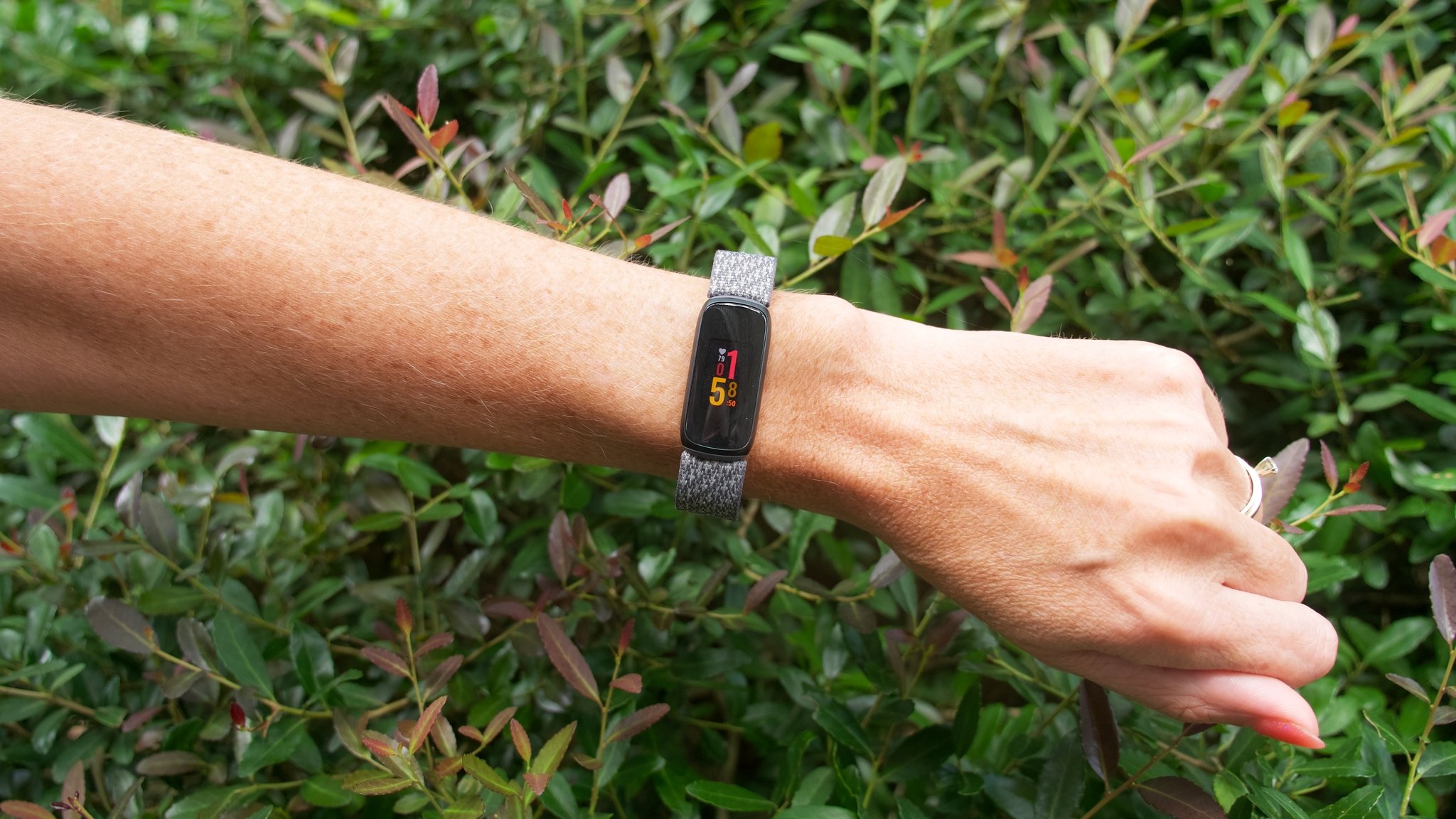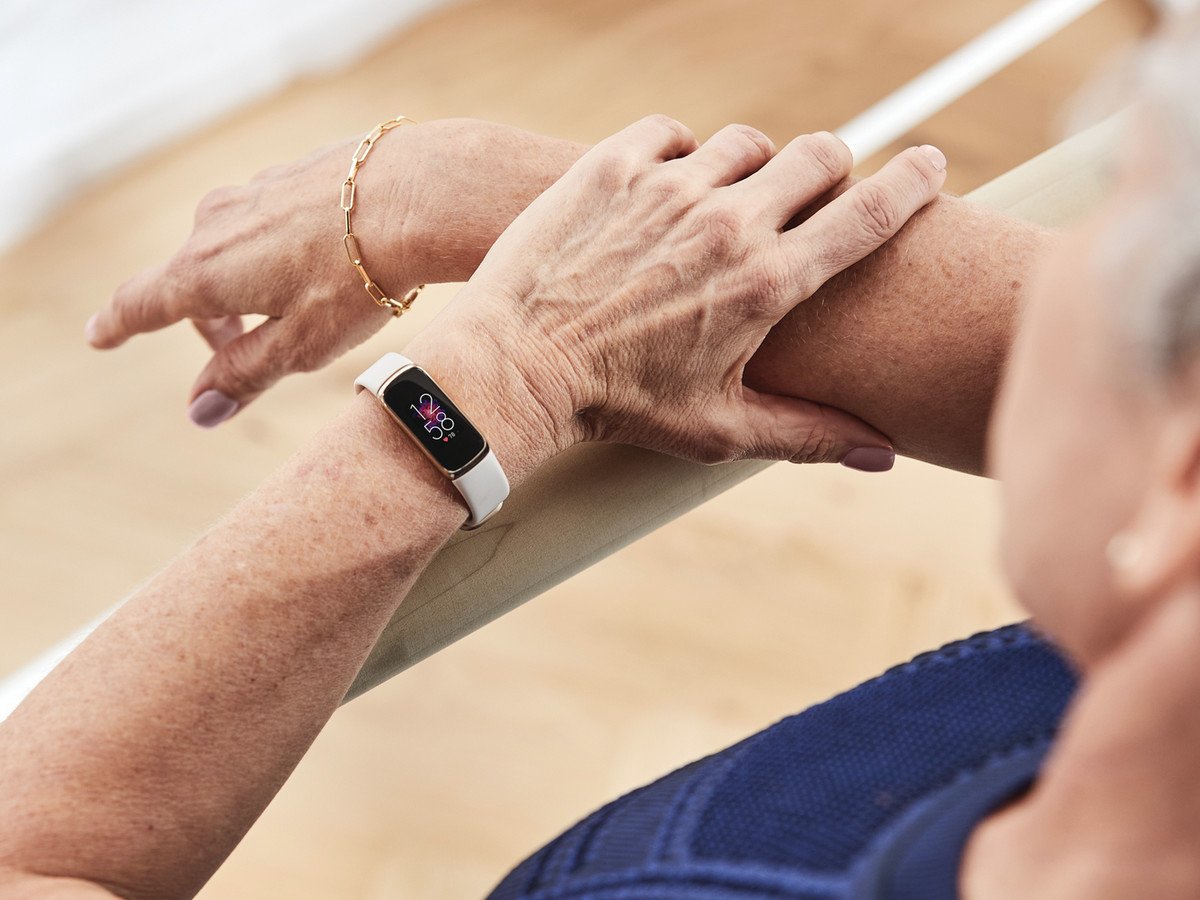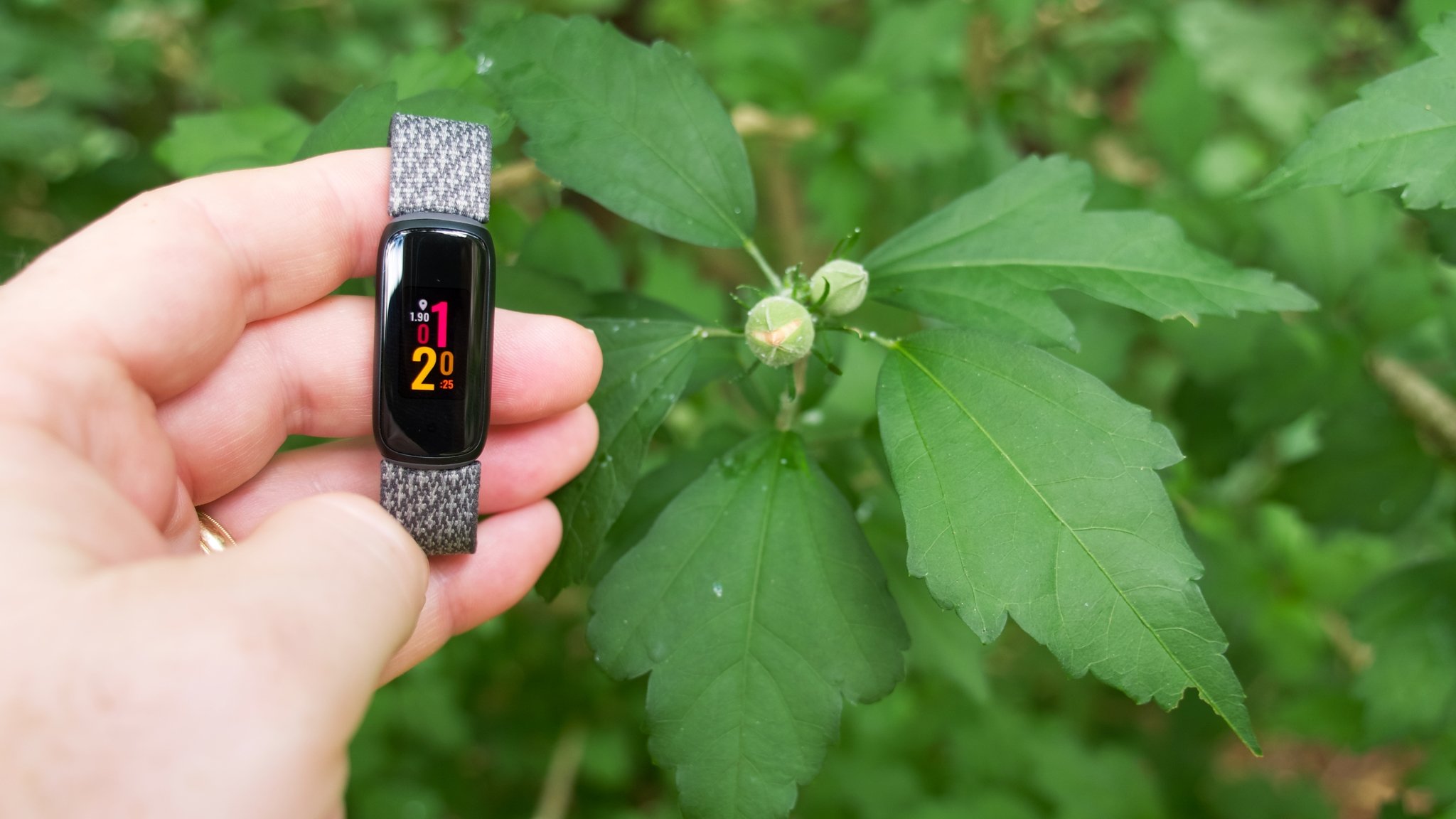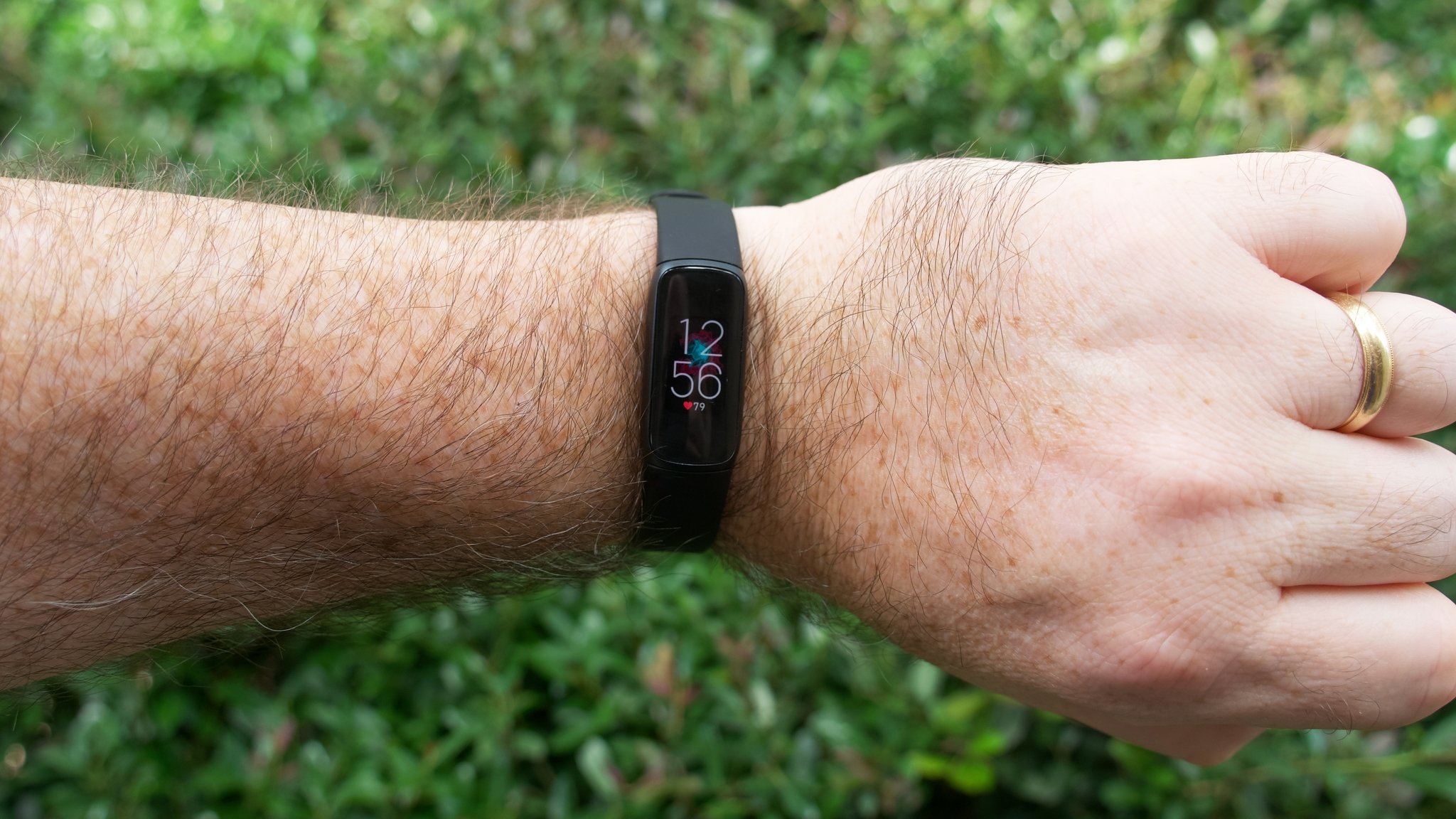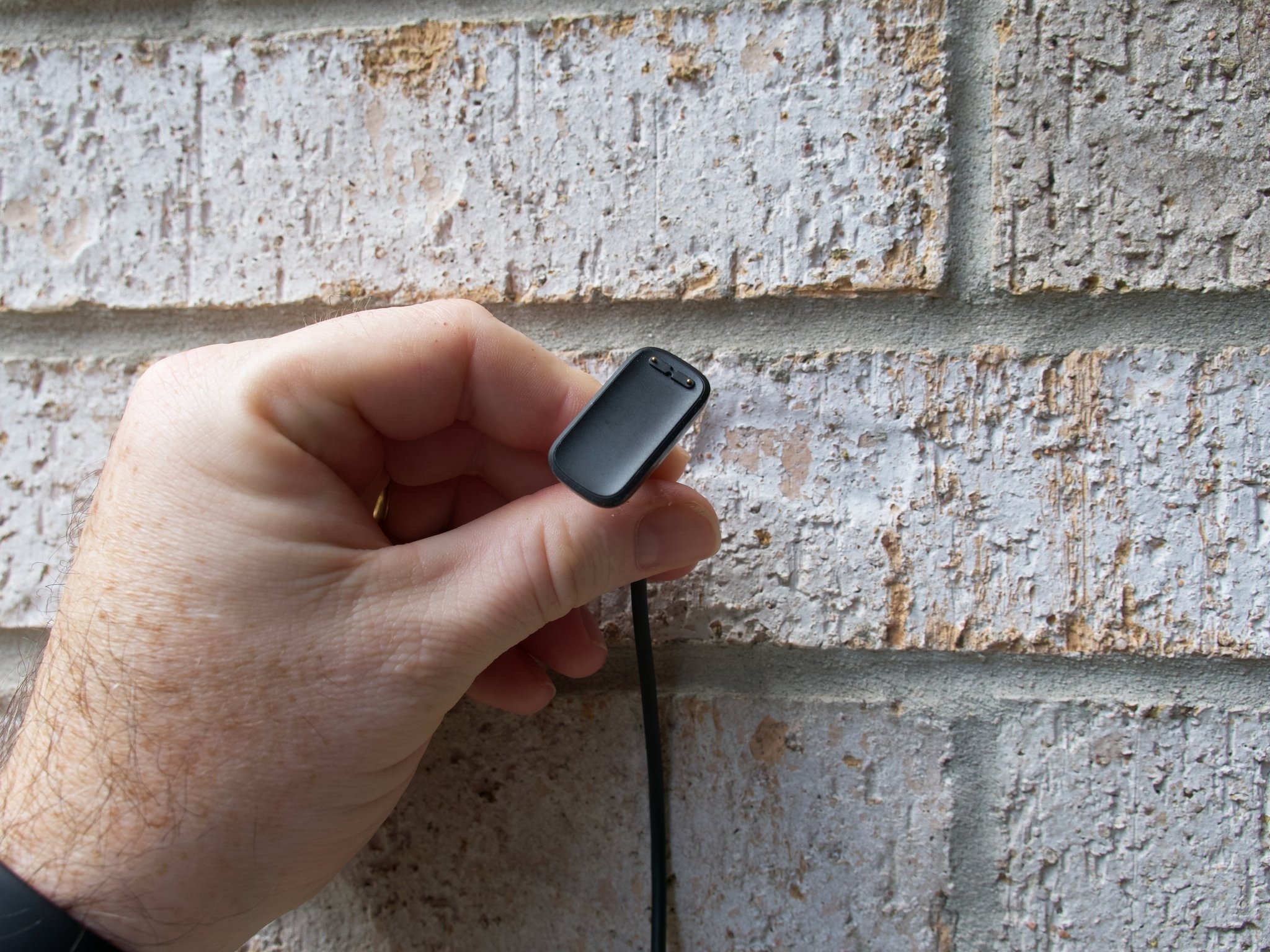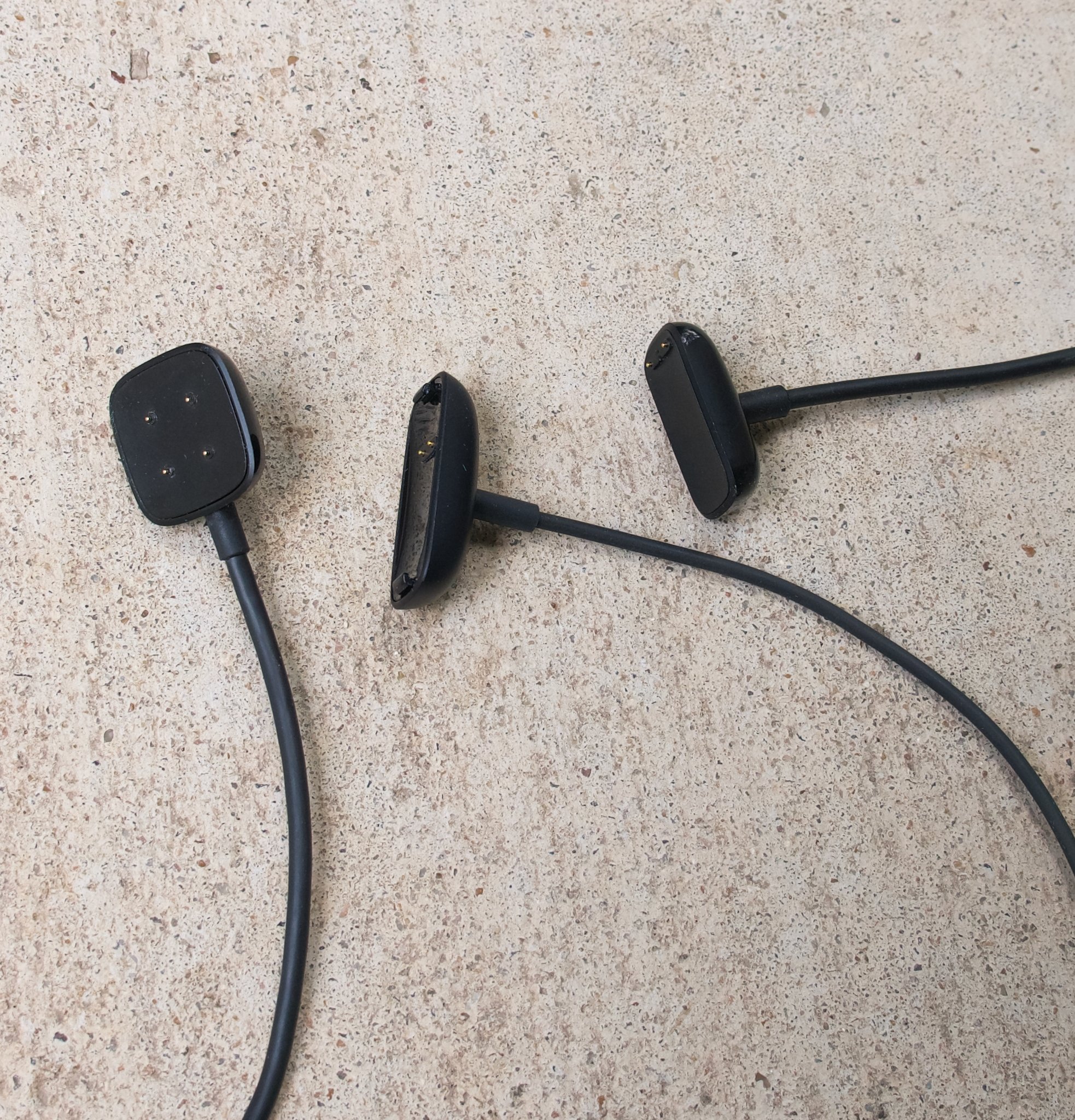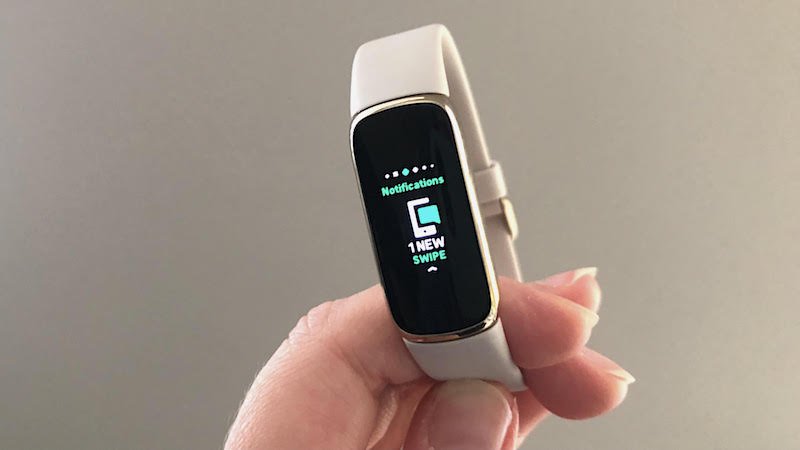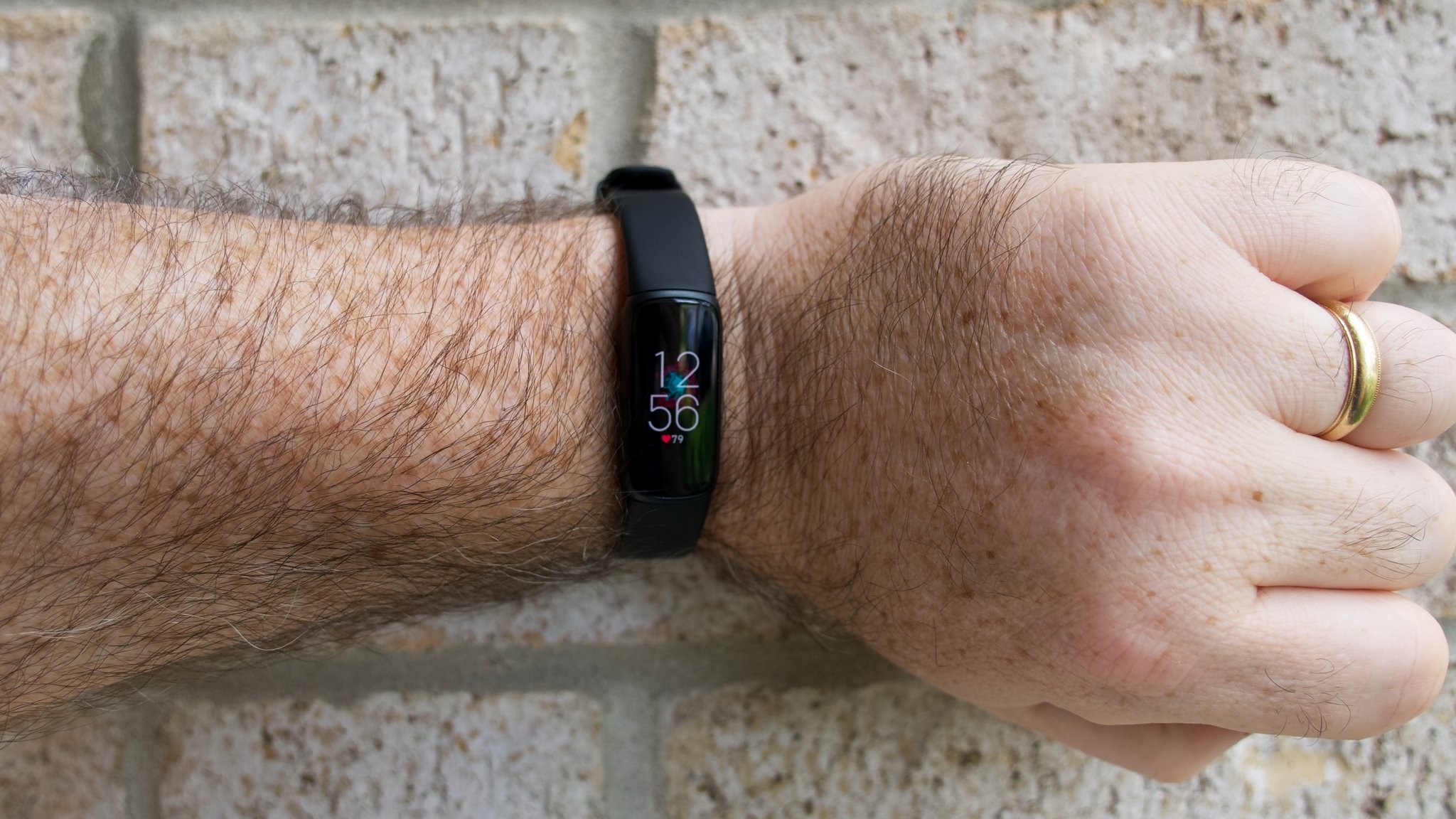This ain't your old boring fitness tracker.
It's no secret that Fitbit makes some of the best, most beloved fitness trackers around. The company was a bit late to the smartwatch game, but it now offers some of the best smartwatches that you can buy for Android or iOS. After the lackluster reception of its Ionic smartwatch, Fitbit redoubled its efforts with the Versa and Sense lines, developing devices that were not only feature-packed but showcased premium designs and built quality. Despite all of these new products, the company most known for its fitness bands hadn't released an all-new tracker design in over two years when the Inspire line came out. That is, until now.
As a known proponent of fitness trackers, I was extremely excited to get the chance to write this Fitbit Luxe review. I know I'm not the only one either — my colleague Jerry Hildenbrand recently wrote about how he is looking for the next great fitness band that he can buy for his wife. But is the Luxe that ideal fitness tracker? For some, yes, but not for all.
In its marketing materials, Fitbit is clearly focusing on a couple of key areas for this device — fashion and wellness. The Luxe is an interesting hybrid device, with the size and feature set of the Inspire 2, the price tag of the Charge 4, and style and design cues clearly borrowed from the Sense. In some respects, it's a jack of all trades, master of none, but I don't mean that as a slight. Even though you can get better specs from lower-priced devices, that's not what this tracker is all about. It is intended to motivate you, to be worn with pride, and be envied by others.
Fitbit Luxe
Bottom line: The Fitbit Luxe is not the best fitness tracker around. It's not even the best tracker that Fitbit makes. It is a beautifully designed device that does most things that most people want in a fitness tracker, all while looking better than other comparable wearables. On the other hand, it's missing some features like NFC and GPS that may be important to some, but that aren't table stakes for most trackers.
The Good
- Most fashionable Fitbit ever
- Small, lightweight, and comfortable
- Beautiful color AMOLED display
- Includes six months of Fitbit Premium
- Supports Google Fast Pair on Android
The Bad
- Doesn't have NFC or GPS built-in
- Has half the battery life of Inspire 2
- Comes with yet another proprietary band clasp and charger
$149 at Amazon $150 at Best Buy $150 at B&H
Fitbit Luxe: Price and availability
The Fitbit Luxe was announced in April 2021 and, shortly after that, was made available for preorder. The standard Luxe is available in three colors: Graphite, Soft Gold, and Platinum with Black, Lunar White, and Orchid silicone bands, respectively, and retails for $150. There is also a Special Edition variant in Soft Gold that comes with a gorjana Soft Gold Stainless Steel Parker Link Bracelet and Peony silicon band that costs $200.
Fitbit Luxe: What's Luxe-urious
There's no denying that the Luxe is one of the best-looking wearables that Fitbit has ever made. The company even lists its "jewelry design" as one of the devices' key selling features. The electronics, display, and sensors are encased in a precision-crafted body made of durable stainless steel and available in three glamorous finishes: elegant Soft Gold, a matte black Graphite, and a silvery Platinum.
We've made major technological advancements with Luxe, creating a smaller, slimmer, beautifully designed tracker packed with advanced features – some that were previously only available with our smartwatches – making these tools accessible to even more people around the globe. - James Park, VP, GM and Co-Founder of Fitbit
| Category | Fitbit Luxe |
|---|---|
| Display | .76 inch color AMOLED 124x206 pixels with 326 PPI denity |
| Dimensions | 1.43 x .69 x .4 inches |
| Weight | .96oz (26.2g) |
| Battery | Up to 5 days |
| Sensors | 3-axis accelerometer Optical heart rate monitor Vibration motor Red and infrared sensors for SpO2 |
| Water Resistance | Up to 50m |
| Materials | Stainless steel case |
| Special Features | Google Fast Pair on Android |
| Colors | Soft Gold/Lunar White Graphite/Black Platinum/Orchid |
The standard edition Luxe comes with color-matched silicone bands, but there are already several attractive first-party and third-party bands to accessorize with, including a platinum stainless steel mesh band, a premium Horween leather double wrap, and platinum and soft gold Parker Link bracelet bands from Laguna Beach-based jewelry brand gorjana.
The band itself is very comfortable to wear. It's slim, lightweight, and largely unnoticeable as I wear it. As a bigger guy, I will say that it almost looks diminutive on me, like a child's wearable, but I imagine the effect will be exactly what you're going for if you're someone with smaller wrists.
The Luxe has the first color AMOLED display on any Fitbit tracker. In addition to making the display brighter and easier to read, it also helps complete the device's premium aesthetic.
Come for the pretty tracker; stay for the health and wellness features.
When you consider that its price tag is anywhere from 50% to 150% higher than other popular fitness bands, it's clear that the Luxe's looks are what will draw in potential buyers, but that's not all that's important here. Fitbit wants the Luxe to facilitate a more well-rounded and mindful lifestyle with its health and fitness features.
For starters, the Luxe supports over 20 exercise modes. Through the Fitbit app, you can load up to six quick-launch exercises at a time, and many of those are customizable to some degree. Running, hiking, and biking workouts allow you to add lap information to the display screen if you like, which is pretty cool for such a small screened device. It even features SmartTrack to automatically record your workouts if and when you forget to. The display is plenty bright for outdoor use, which is ideal for taking advantage of its fitness features. And even though I didn't test it, I imagine that the bright display is also nice when swimming laps (which you can easily do thanks to its 50M water resistance).
Fitbit's Google integration is already showing up here in the form of Google's Fast Pair technology for Android phones.
Speaking of those features, the Luxe comes packed with many of the same sensors found on Fitbit's smartwatches. For example, it can measure your VO2 max, skin temperature, and SpO2. It tracks your steps, heart rate, and active zone minutes, and it can show you blood glucose levels and menstrual cycle information, as well as food, water, and weight logs — all of which can be input to and synced from the Fitbit app. Oh, and this is really cool — the Luxe supports Google's Fast Pair technology, so as soon as you take your device out of the box, it will ping your Android phone to begin setup right away.
I also like that Fitbit is continuing its trend of including six months of Fitbit Premium with the Luxe, just like it has with the Sense smartwatch. Fitbit Premium includes guided workouts, advanced health metrics, and guided meditation sessions like the Mindful Method activities hosted by Deepak Chopra.
Over the past year, we've had to think differently about our health – from keeping an eye out for possible COVID-19 symptoms to managing the ongoing stress and anxiety of today's world. Even though we are starting to see positive changes, it has never been more important. - James Park, Fitbit
Fitbit is really leaning into this concept of holistic health and wellness, with features like the Stress Management Score, which uses data collected by your Luxe like activity levels, sleep, and heart rate, as well as giving you the ability to log and track your self-reported stress levels and emotions to provide you with daily and historical assessments and tracking of your body's ability to handle stress. The idea is to help you become more aware of how your actions and environment can affect your stress levels and provide guidance and tips on managing that stress.
The Health Metrics Dashboard goes hand-in-hand with the Stress Management Score to show your historical trends regarding breathing rate, heart rate variability, skin temperature variation, and oxygen saturation (Sp02), the last feature Fitbit said is "coming soon."
Most of these holistic health features are, in fact, available on Fitbit's other trackers and smartwatches, but it is nice to see that Fitbit is also focusing on them as part of the Luxe's marketing message. It's important to look good, but it's more important to feel good, and that's the balance that Fitbit is trying to achieve here with the Luxe.
Fitbit Luxe: What I don't love
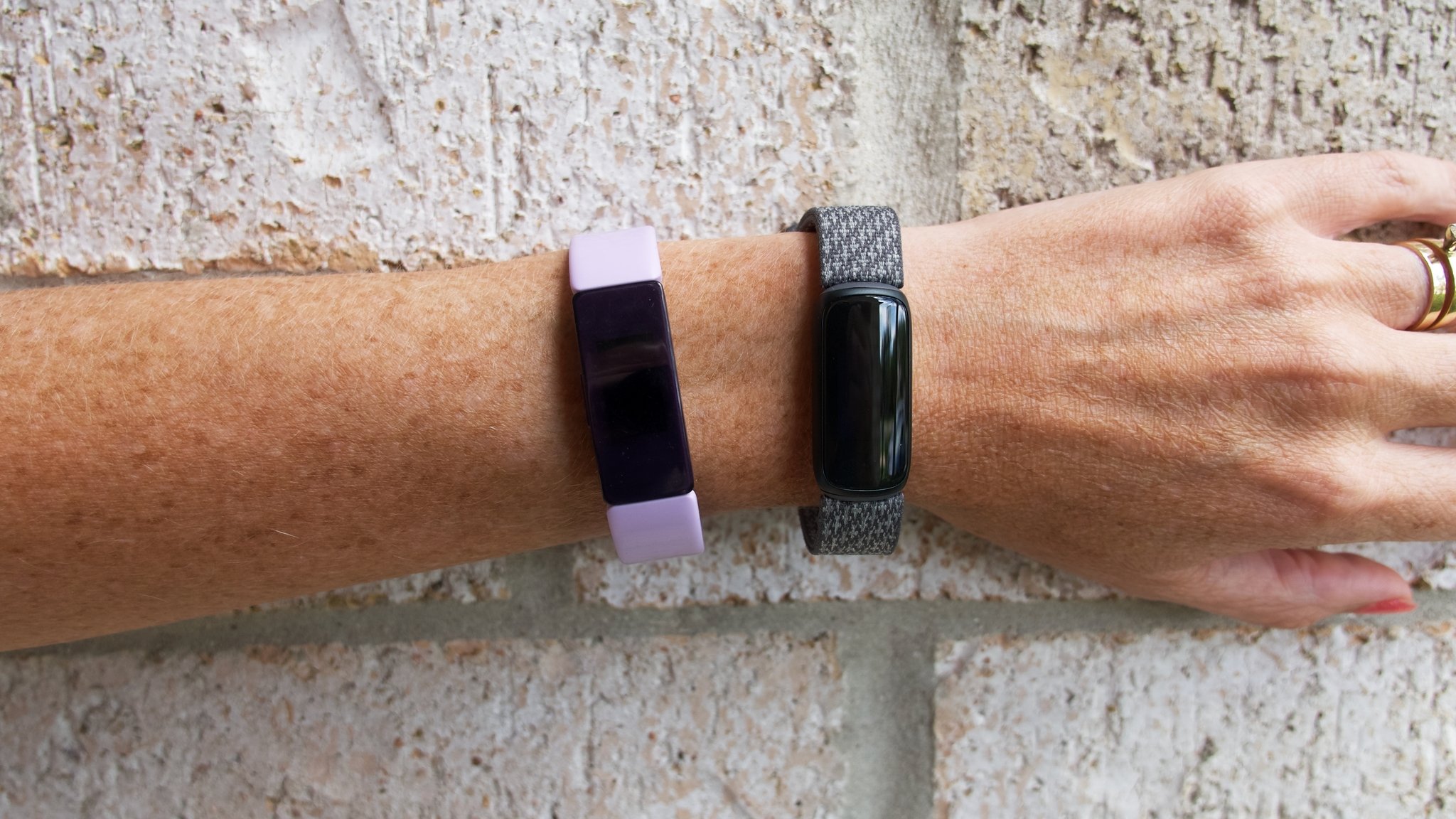 Fitbit Inspire HR (left), Fitbit Luxe (right)
Fitbit Inspire HR (left), Fitbit Luxe (right)
There's an awful lot to like about the Luxe, to be sure, but like any other tech device, it's not perfect. Still, many of the complaints and reasons why the device doesn't work for me might be seen as favorable features for others. So take my observations below with a grain of salt. Just because I say that I don't like something doesn't mean that it's bad or wrong. It just means that it doesn't work for me; your interests and needs will differ from mine, and that's OK.
This small display has teeny tiny text that may be difficult for many to read.
I mentioned earlier how much I like the bright color AMOLED display, and maybe it's just me and my bad eyes, but the text on this thing is really small. So while I could see the data that I needed to on during walks and runs, I had difficulty actually reading it. Maybe I need to start running with glasses or contacts, but it's something that you should know if your eyesight isn't the best.
When it came to navigating the display, I also wasn't the biggest fan. Unlike every other Fitbit tracker, the Luxe has no physical or faux-haptic buttons to select options or go back to a screen. Instead, everything is done with a series of swipes. Just like other Fitbit wearables, you can swipe up to access the today view with your battery percentage and daily stats, swipe down to access various modes and settings, and swipe left or right to access notifications, exercise modes, guided breathing sessions, and alarms or timers. To return to the home screen, you need to firmly double-tap the display. While I appreciate the brand consistency, I found the constant swiping on such a small display to be a bit frustrating, mainly when I was all sweaty and gross during or after a workout.
If you're looking for NFC for contactless payments or on-device GPS, you might want to pass on the Luxe because it doesn't feature either. The Luxe also doesn't currently support the Tile tracking technology, though I suppose it could come later with a firmware update like it did for the Inspire 2.
The Luxe comes with its own new band attachment mechanism, which means that you won't be able to use bands from an Inspire or any other device, and it comes with yet another proprietary charger that cannot be shared with any other device. It seems like the Luxe could rightfully share bands with the Inspire since they are similar in size, but just because the mechanism is quick-release doesn't mean it's easy. I had the darndest time getting the bands changed; I don't know if it was because of my big fat fingers or that the button was too small, but it sure was frustrating for me.
With such a small physical casing and a bright color display, it makes sense why the Luxe's battery doesn't match that of the Inspire 2, but I would have liked to see something longer than five days at this point. It's impressive that Fitbit was able to hit that minimum point that most of its other devices share, but for the Luxe 2 (or whatever they call it), I'd like to see something in the 10-14 day range.
Beauty isn't cheap — the Fitbit Luxe is fairly expensive for a fitness tracker.
Finally, we have to talk about the price. Again, I get it; it makes sense (Sense?) why Fitbit priced the Luxe where it did. It features premium materials, a gorgeous screen, and it's throwing in half a year of its premium subscription service. However, if you just want a basic fitness tracker that is well made, you can get that for a lot less — even ones with a color screen, as we'll see in the next section.
Fitbit Luxe: Updated features
Fitbit has been known to release wearables with the promise of certain features launching at a later date. Fortunately, it didn't take long for the Fitbit Luxe to receive some much-needed updates. In October 2021, the company announced the following Fitbit Luxe updates:
- Luxe users will now have the option to use an always-on display, which means they won't have to tap or raise their wrist to illuminate the screen.
- The always-on display support will make the clock visible at all times, but users can also take advantage of this feature when utilizing the timer or recording activity.
- Luxe users will now have access to blood oxygen saturation (SpO2) tracking, which can be accessed in the Fitbit app under the Health Metrics Dashboard or on the device by swiping up on the Today screen.
Fitbit Luxe: Competition
Given the fashion-forward focus of the Luxe, it can be a little tricky finding the right analog to this designer digital device. There are plenty of lower-cost fitness trackers that have similar sensors, sizes, and color screens. I'm specifically thinking of bands like the Xiaomi Mi Band 6 or the Samsung Galaxy Fit 2. Unfortunately, what those bands offer in terms of a lower cost of entry, they lose compared to the Luxe's build quality and style.
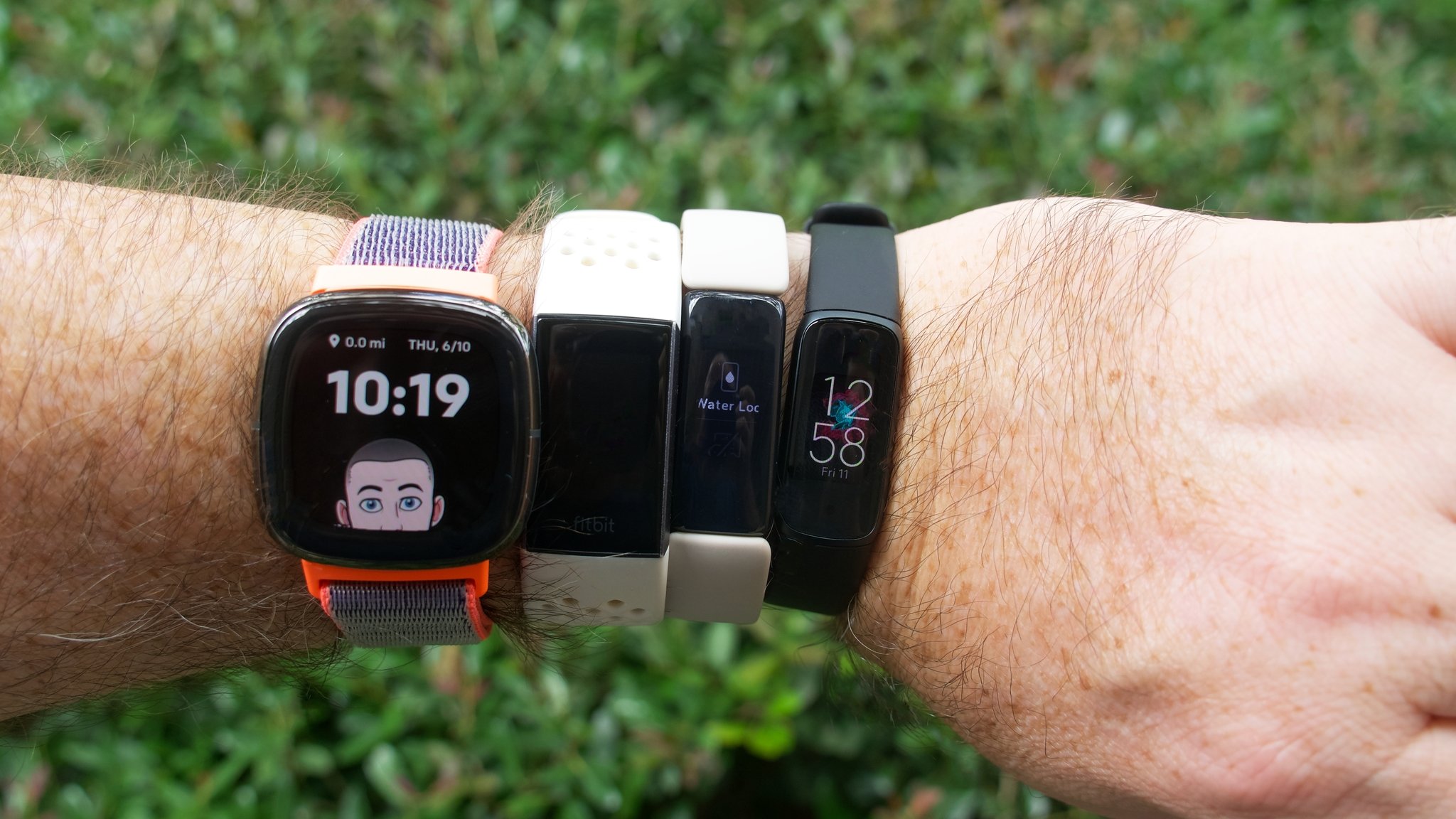 Left to right: Sense, Charge 3, Inspire 2, Luxe
Left to right: Sense, Charge 3, Inspire 2, Luxe
For those who want to join or stay in the Fitbit (and hence Google) ecosystem, it's worth taking a look at the Inspire 2 or Charge 4. With the former, you get a similar, slimmed-down tracker that you can dress up or down. The Inspire 2 is also $50 cheaper than the Luxe, has a battery that lasts a week longer, and can integrate with the Tile tracking platform. It also comes with a full year of Fitbit Premium, but it is made of plastic rather than stainless steel like the Luxe. The Charge 4 also has a plastic body and a similar price tag to the Luxe, but its black and white display is larger, and it has built-in GPS and NFC, two features the Luxe can't match.
The best alternatives from a fashion perspective would have to be the Garmin Lilly, or perhaps the 40mm Apple Watch SE or Series 6. Both smartwatches can go toe-to-toe with the Luxe in terms of looks, but both are significantly pricier (and the Apple Watches only work with iPhones).
Fitbit Luxe: Should you buy it?
You should buy this if ...
- You have small wrists or prefer a minimal wearable
- You prefer the look of fancy jewelry to sporty devices
- You want the style of an Apple Watch without the price or operating system requirements
- You need NFC for contactless payments or GPS for workout tracking
You shouldn't buy this if ...
- You want the absolute best Fitbit tracker
- You want a larger screen
- You want a smartwatch experience
I'm a huge fan of fitness trackers in general and Fitbit wearables specifically, but the Luxe is not a device that I would buy for myself. It's too small for my wrist, and it's overpriced for my needs. That said, it's a damn fine fitness tracker that many will rightfully gravitate to because of the overall package it offers. With it, you get access to Fitbit's awesome app and ecosystem, six months of the vastly underrated Fitbit Premium service, and advanced health tracking and analytics.
All of that is great, but what's more likely to motivate people to lust after the Luxe is the way it looks. There simply isn't another tracker that looks this good, nor any that can be dressed up or down to be worn in virtually any setting like the Luxe. The closest competitors to it are full-on hybrid or smartwatches like the Garmin Lilly or Apple Watch, but both of those wearables start at higher price points which can quickly get out of the range of most people. So if you want a small device that can handle all of your fitness tracking needs while looking top-notch, the Luxe just might be for you.
Fitbit Luxe
Bottom line: The Fitbit Luxe is not the best fitness tracker around. It's not even the best tracker that Fitbit makes. It is a beautifully designed device that does most of the things most people want in a fitness tracker, all while looking better than any comparable wearable. However, it's missing some features like NFC and GPS that may be important to some but aren't table stakes for most trackers.
$149 at Amazon $150 at Best Buy $150 at B&H
Review Changelog, October 2021
This article was originally published in June 2021.
It was updated in October 2021 with the following changes.
- Updated pricing to reflect recent sales.
- Added "Updated features" section.
- Added mention of always-on display support.
- Added mention of SpO2 tracking.
Source: androidcentral
